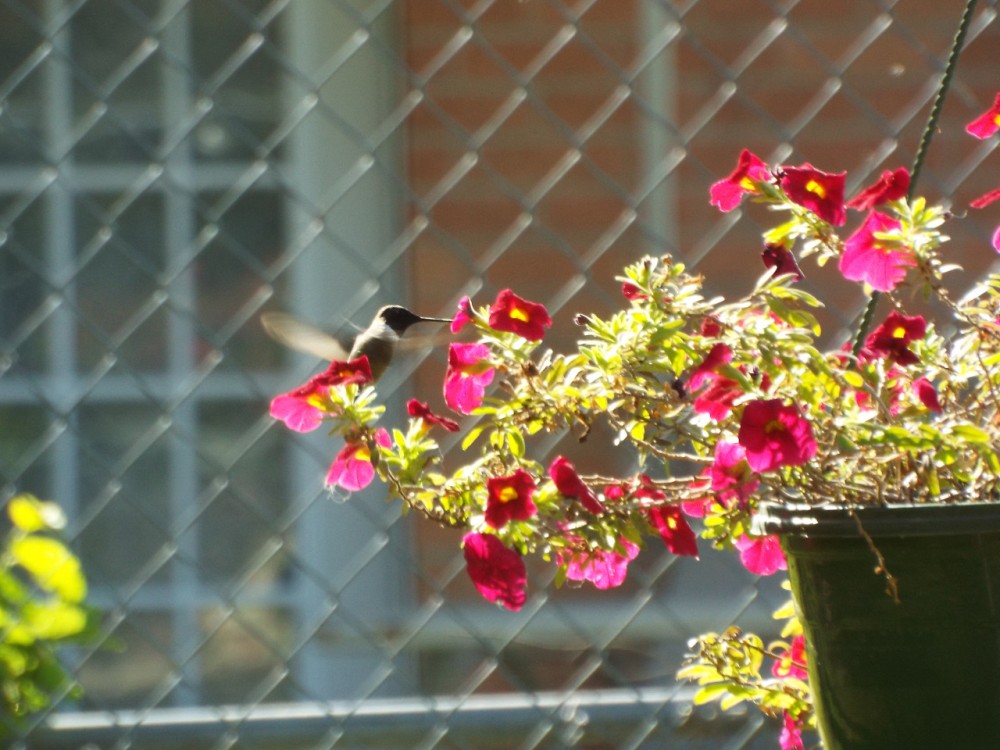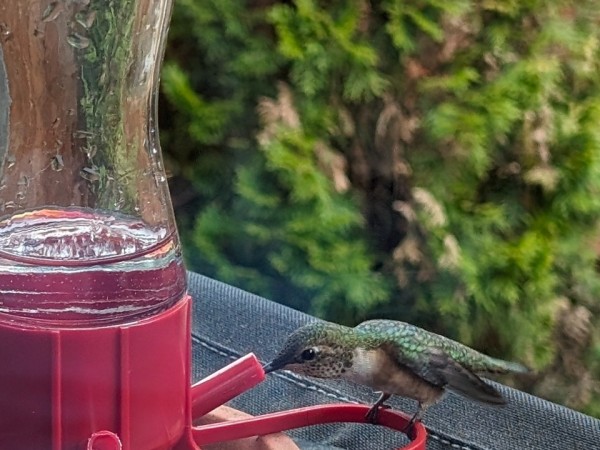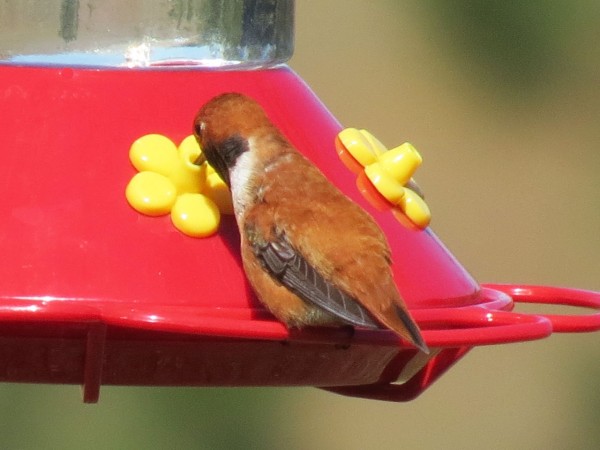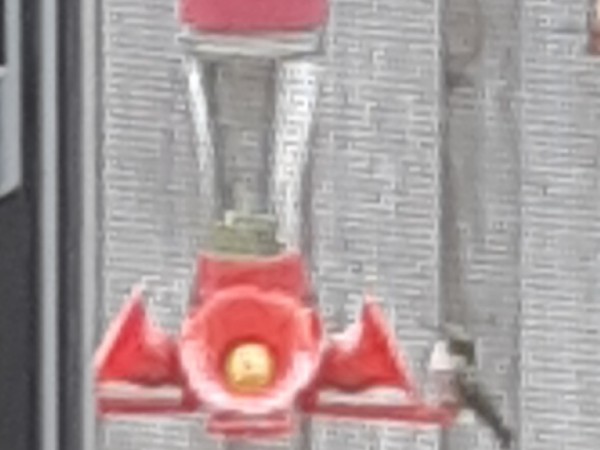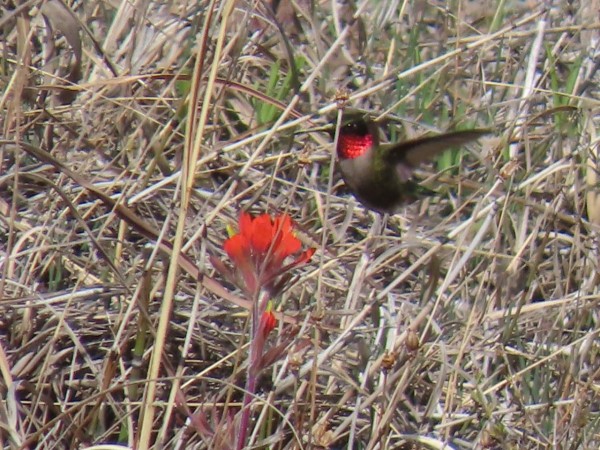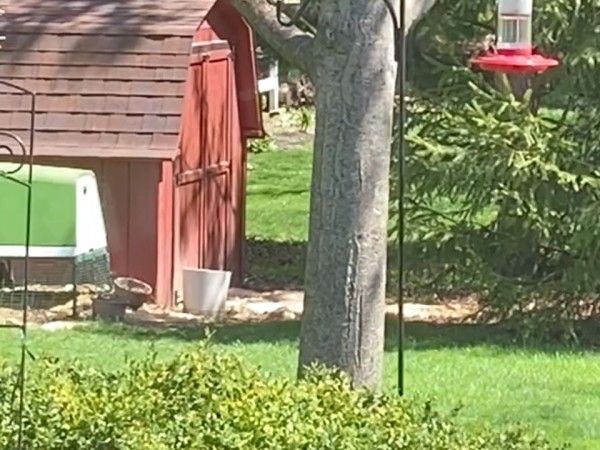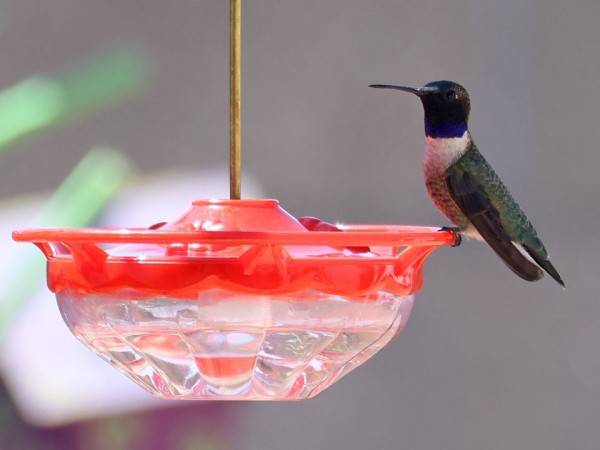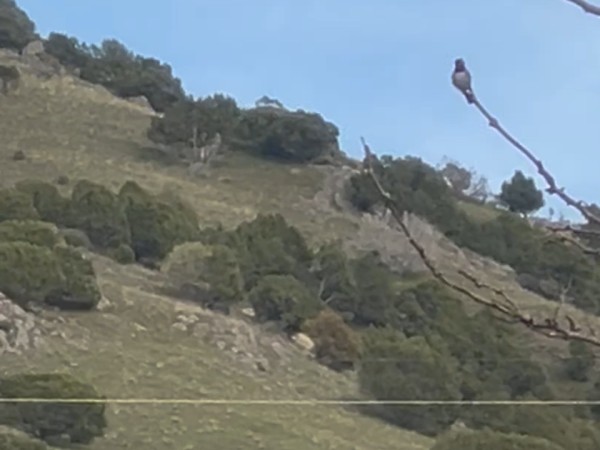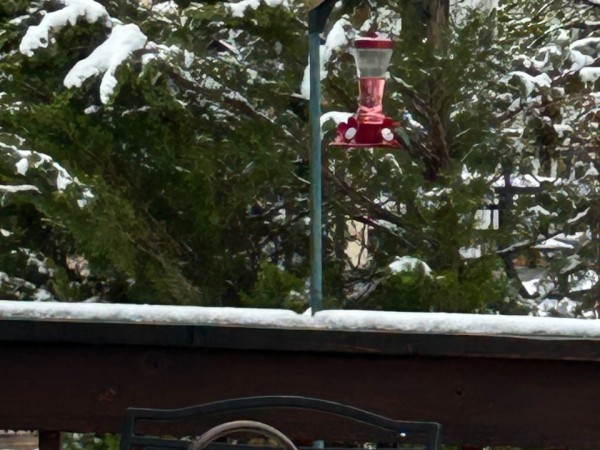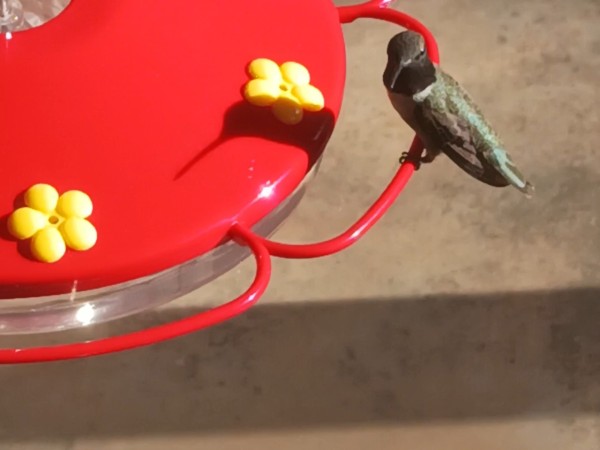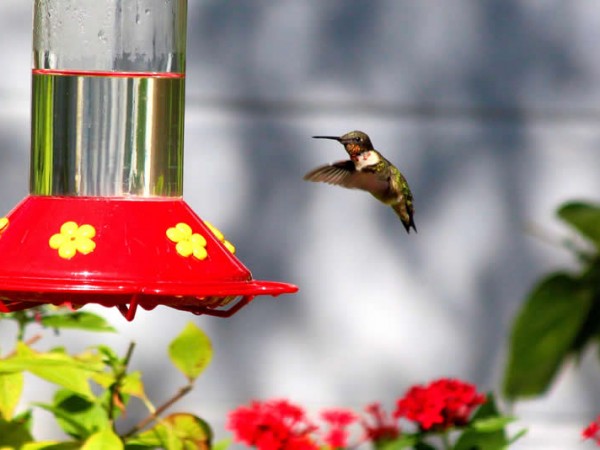Surge of Hummingbird Reports
Witness the spring migration of hummingbirds through the observational reports and photos of Journey North. Rufous hummingbirds have now been spotted in Alaska and Idaho. Ruby-throated Hummingbirds have been making their presence known, with sightings extending as far north as Ontario in Canada and upstate New York and Maine in the United States. Across the Midwest, these vibrant creatures have been spotted in Iowa, Illinois, Ohio, and Michigan, marking their steady progress northward. Numerous reports of Anna's, Broad-tailed and Black-chinned herald the spring arrivals of these hummingbirds.
Rufous Hummingbird Migration
The Rufous Hummingbird embarks on one of the longest migratory journeys of any hummingbird, spanning nearly 4,000 miles from Mexico to Alaska. Despite weighing less than two U.S. pennies, these tiny aviators undertake this marathon journey, beginning as early as January from their wintering grounds. As they travel along the Pacific Coast, they typically reach the northernmost point of their breeding range in Alaska by mid-May.
This year, Journey North observers have been astounded to witness Rufous hummingbirds unexpectedly appearing in their midst, not only along the Pacific Coast but also venturing further inland as temperatures warm much earlier than expected.
Recent reports from Vancouver Island, Washington state, Idaho, Colorado, and New Mexico underscore this expansive migration pattern. From the coastal regions to the Rocky Mountains, Rufous Hummingbirds navigate towards areas where spring flowers and other vital resources are hopefully in bloom.
Robert & Sandi in Juneau, AK: "Our first Rufous sighting at our place for the season. Lovely male. Seen at about noon." (04/10/2024)
Madeleine in West Kelowna, BC: A cool spring so today overcast but warmer saw the first Rufus. Spent a bit of time at the feeder and left. Is he staying, or just passing through." (04/23/2024)
April in Everett, WA : “Yesterday at 1158 a female Rufous hummingbird made her debut. She nectared from my feeder as veils of drizzling rain sparkled in the sunbeams against a backdrop of blackened clouds. All morning we experienced gusty winds and torrential rain, which culminated in a hailstorm less than five minutes prior to her arrival; however, she remained elusive from my sight all afternoon and into the evening. Today, our schedules synced at 1647, so I timed her activity for an hour, during which she fed every ten minutes without exception. Interestingly, she would zoom over blackberry thickets during inbound flights, then dive into the thorny brushwood for outbound flights. While she was away, no additional hummingbirds visited the feeder, and only once did she have to escort another hummingbird, an Anna's likely, out of her territory. I'm thrilled that she has arrived: Thank you for choosing my back-yard feeder, Lady Rufous." (04/03/2024)
Gary in Cora, ID: "Our first hummer of the year, at 11:05 am." (04/17/2024)
Robbie in Sagle, ID: "We put the feeder out back on the 15th and while we didn’t see a hummer until yesterday, we had marked the bottle and noticed that the fluid was going down. Yesterday we saw a male Rufous and then again today." (04/22/2024)
Ruby-throated Hummingbird Migration
Meanwhile, Ruby-throated Hummingbirds have been making their presence known, with sightings extending as far north as Ontario in Canada and upstate New York and Maine in the United States. Across the Midwest, these vibrant creatures have been spotted in Iowa, Illinois, Ohio, and Michigan, marking their steady progress northward.
Observers across different locations, from Ontario to New York and Michigan, reported sightings of Ruby-throated Hummingbirds earlier than usual.
Darcy in Fergus, ON: “UNBELIEVABLE! Earliest ever in my life! Small female at our feeder this afternoon. Thought I was seeing things. Saw her just the once and not again.” (04/13/2024)
Submitted by Don Davis for Nelson Contardo in Norfolk, ON: "...spotted one Ruby-throated Hummingbird on April 19th at the tip of Long Point.” (04/18/2024)
Sheila in Niles, MI: “Was standing outside talking to a friend and the Hummingbird buzzed right by us. About 4 feet off the ground, fast and straight. Got my feeder out as this is 2 or more weeks early for us.” (04/09/2024)
Frank in Itasca, IL: “We heard they were coming two weeks early and this one didn’t disappoint. First ruby throat of the season almost two full weeks earlier than last year on a perfectly sunny day.” (04/19/2024)
Tessa in Bay Shore, NY: “Male spotted at feeders at 2:10pm. This is the earliest I have spotted them here during spring migration - about 6 days earlier than usual." (04/25/2024)
From Missouri to Illinois, and along the east coast to Maine, these sightings extend across a broad geographic range, highlighting the widespread presence of these hummingbirds as they journey northward.
Greg in Hannibal, MO: "It's official!!! I saw my first hummingbird at my feeder today at 3:03 p.m., CDT, on April 25, 2024. I have had my feeder out for the past 10 days since April 15, 2024, so this is almost certainly not the first hummingbird at my feeder this year, especially since the sugar water has been drawn down by about one inch for some reason. I am changing my sugar water today. I recorded this little guy only a couple of minutes ago at 4:50 p.m., CDT (nearly two hours after my first 2024 sighting) after standing very still at my kitchen window for a cumulative time of close to one hour.” (04/25/2024)
Paula in Rehoboth, MA: “Saw my first hummingbird today for 2024 at 7:38pm.” (04/25/2024)
Cathy in Kennebunkport, ME: Observed one. 04/23/2024
Bird in Geneva, NY: “630 am heard fly by window. Cold 35 degrees, sun shining. Dawn is At 5:45 sunrise at 6:15. Civil twilight is 4:20 and birds are singing at 4:30 a.m. Warm feeders at 6 a.m.changed from overnight . The hummingbirds prefer flowers to feeders in early morning. The Cherry tree is in blossom and rose of Sharon blossoming, Tulips, hyacinth and daffodils nearby in the neighborhood. Today is the 3rd hummingbird instance! Still in migration.” (04/17/2024)
Overall, these reports provide valuable insights into the pace and extent Ruby-throated Hummingbird migration.
Other Hummingbird Species: Allen’s, Anna’s, Broad-tailed, Black-chinned, and Costa’s
Journey North observers help track five additional species of migratory hummingbirds. Observational reports are slowly trickling in. Are you seeing Allen’s, Anna’s, Broad-tailed, Black-chinned, and Costa’s hummingbirds in your area? Please let us know.
Journey North observers in Colorado are reporting the arrival of Broad-tailed hummingbirds. Anna’s have migrated as far north as British Columbia and defending breeding territories. Usually, male hummingbirds arrive first followed several weeks later by female hummingbirds. The males scout areas for breeding. This year, the sequential timing seems to be greatly constricted. Male Black-chinned hummingbirds have been sighted in New Mexico quickly followed by female Black-chinned hummingbird counterparts.
Kathleen in Coldstream, BC: "One Anna’s Hummingbird at feeder at the same time as Rufous. It is usually the Rufous who comes first but they came together this morning." (04/14/2024)
Barbara in Missoula, MT: “I just put my feeders up yesterday. I always put them up a week before the date I saw my 1st one the previous year. So last year was 4/29/23. I came out of the kitchen and had opened the front door earlier as it was almost 70 here in Missoula, MT and I saw a male Calliope at the feeder on our front deck. It was 5:12 PM. Took off before I could find my phone. So excited." (04/23/2024)
Diana in Albuquerque, NM: “We've been hearing them all week but our first hummingbird was spotted 4-12. Four days later than our first hummingbird from last year. Male Black-chinned.” (04/12/2024)
Diana in Albuquerque, NM: “One day after our first male Black-chinned was spotted, we already have a female! Usually, they arrive several days after the first male(s).” (04/13/2024)
Rose in Providence, UT: “Heard my wee friend first and then saw it. First arrivals are always so exciting! I think it is a Broadtail hummingbird.” (04/22/2024)
John in Fort Collins, CO: “First male Broad-tail hitting the sugar in the snow and fog. Amazing creatures.” (04/21/2024)
Put Feeders Out and Plant Pollinator Habitat
As hummingbirds continue their migration, it's essential to support them by putting out feeders and planting pollinator-friendly habitats. Floral resources and insects provide much-needed protein and sugars for these energy-draining journeys, ensuring the well-being and survival of hummingbirds.
Observations of hummingbirds nectaring on flowers, like Amy's sighting in Newburgh, Indiana, highlight the importance of natural food sources alongside feeders.
Amy in Newburgh, IN: "An early morning visitor sipping nectar on the Golden Bells Cuphea. This adult male Ruby hummingbird showed up at 6:22 a.m. central time. I did observe a male even earlier at the feeder." (04/26/2024)
Friendly reminder: don’t use red dye in your hummingbird feeders. Read the article below.
Snap A Photo
Hummingbirds are not always cooperative subjects. One potential workaround is to take a video and then extract a screenshot to use as a photo. Give it a try!
Learn more in the tutorials below: Android Tutorial | Apple Tutorial
William in Edmond, OK: “I used my cell phone to take the video and then selected this photo from the video using the instructions you provide on your website. Never noticed this on your website before. Thank you.” (03/30/2024)
What To Report
Learn more about what to include in your hummingbird observational reports>>

